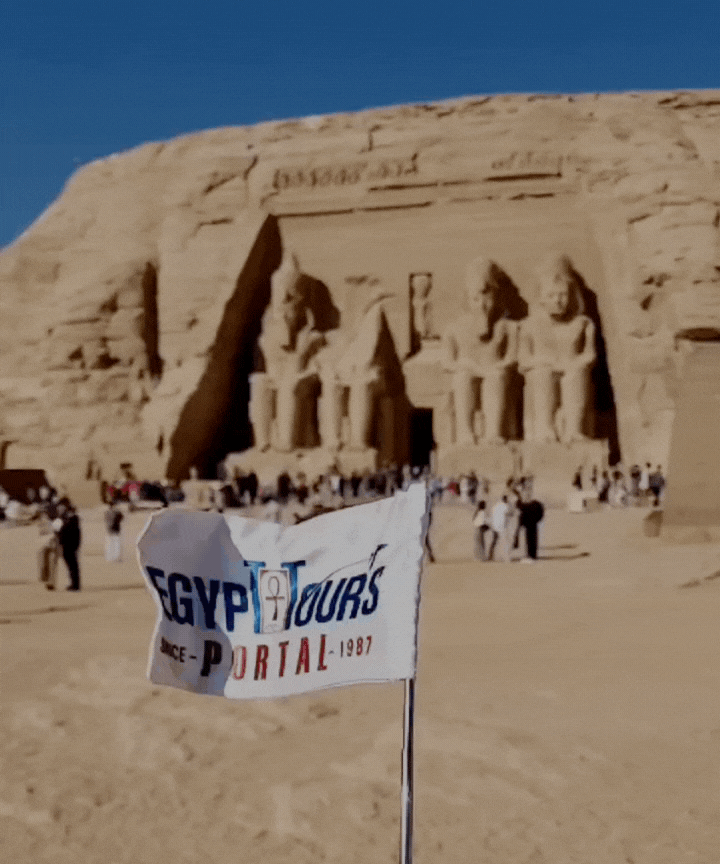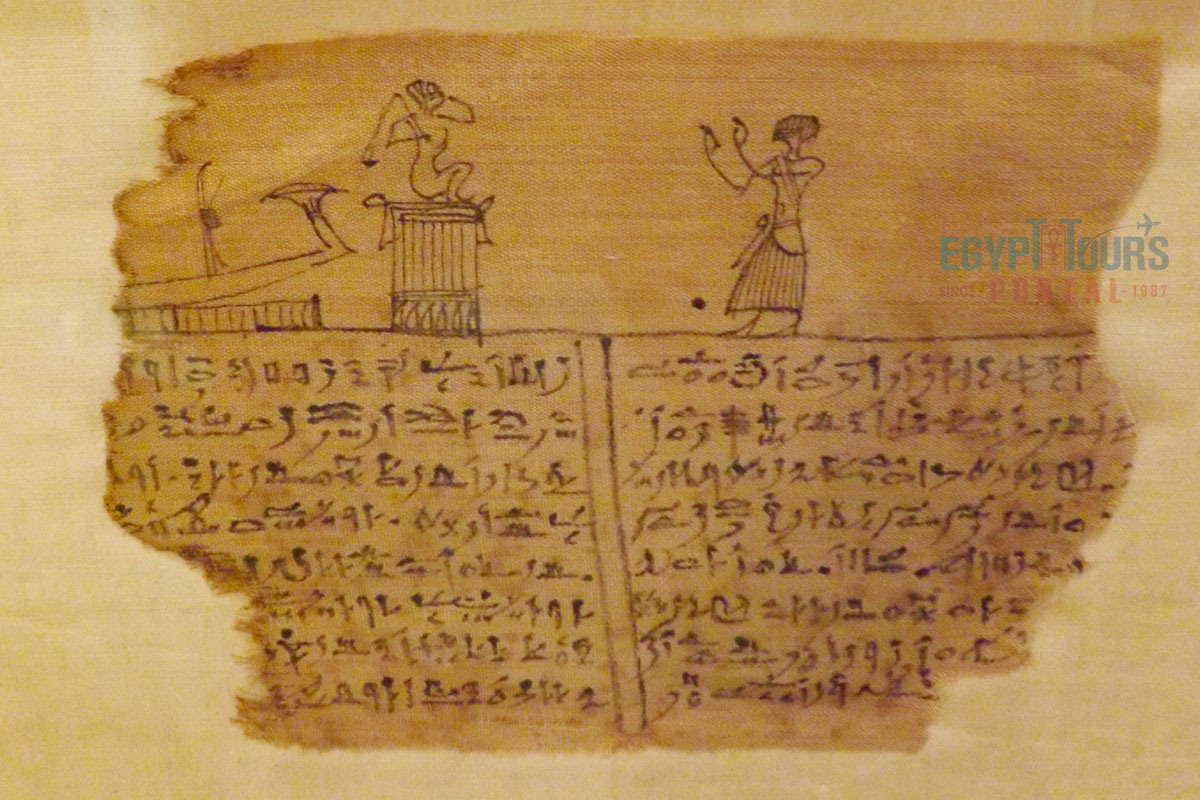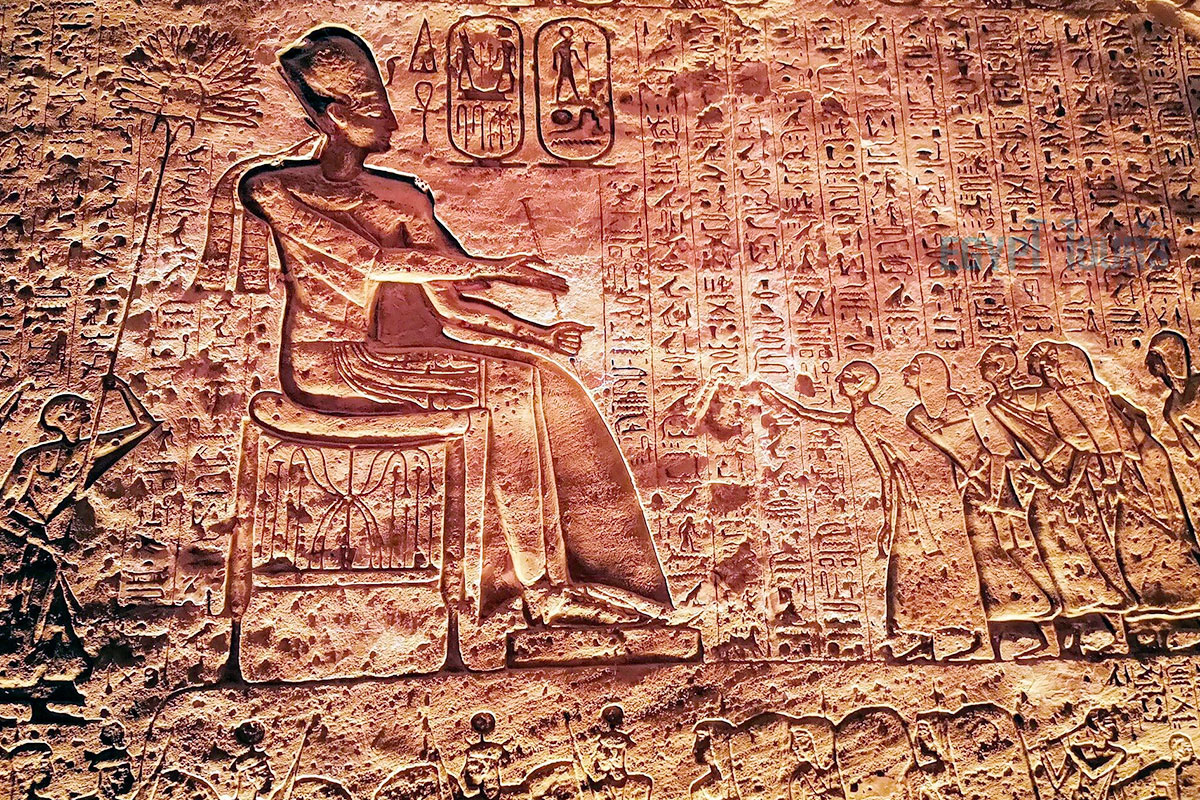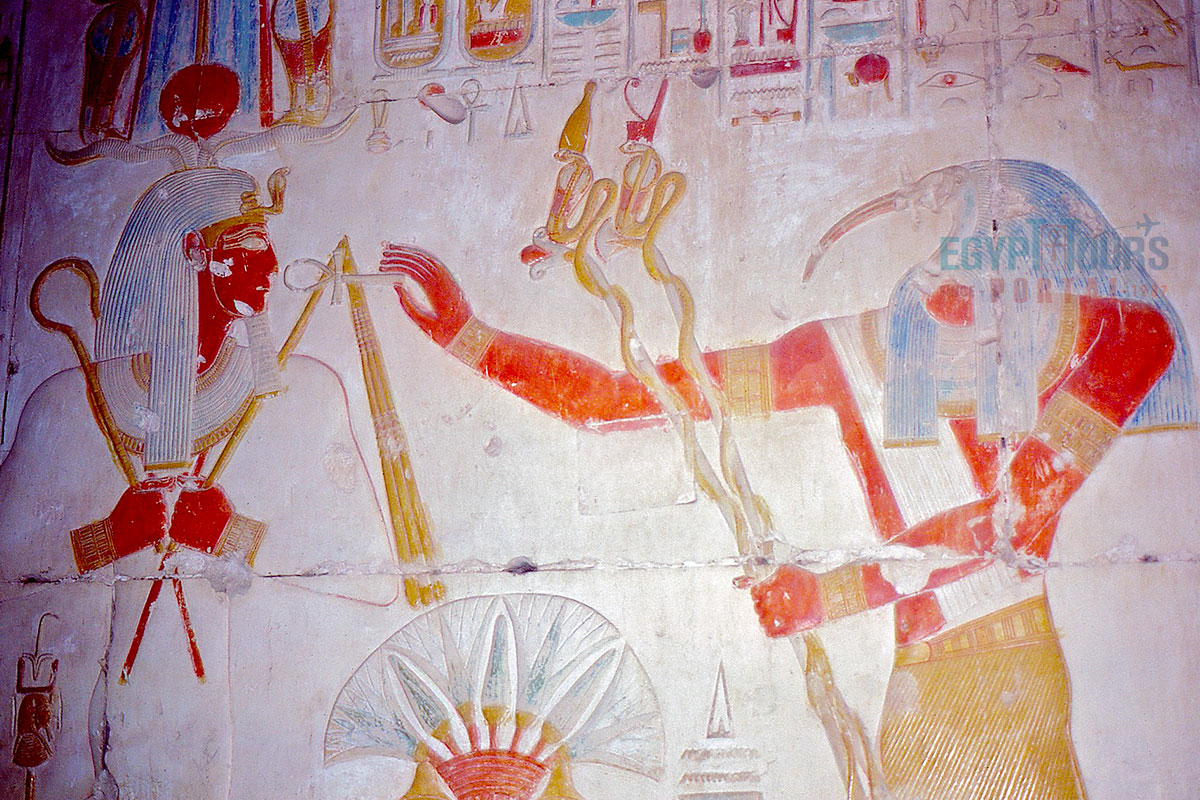Ancient Egyptian texts embody the spiritual and intellectual essence of Egypt’s civilization, spanning millennia. More than mere records, they served as sacred tools guiding the dead to the afterlife, preserving myths, sharing scientific knowledge, and conveying moral wisdom. Written in scripts like hieroglyphic and demotic, these texts etched on tombs, coffins, papyri, and temple walls were seen as divine voices and keys to immortality. Collectively, they reflect the depth, order, and legacy of ancient Egyptian society.


Ancient Egyptian Texts can be seen as the recorded historical and cultural heritage of the ancient Egyptian civilization that was cultivated over thousands of years. Egypt has developed one of the most incredible collections of the earliest literature in the history of mankind that was written in hieroglyphic and hieratic in the late 4th millennium BC during the final days of predynastic Egypt.
The texts contain several magnificent facts, stories, hymns, words of wisdom, funerary rituals, and spells that was seen as the words of the gods and goddess of ancient Egypt which opened a gate revealing a civilization's quest to bridge the mortal realm with the divine, to navigate the treacherous waters of the afterlife and to harness the very forces of magic that course through the ever-growing veins of existence.
IMPORTANT NOTE:
This information does not seek to degrade or insult any religion. All the information is based on historical evidence, any similarities that you may find with your own faith or religion are from the figment of your imagination.

Religious texts from each era derive their names from the primary surfaces on which they've been preserved, a classification established by contemporary scholars. The 'Pyramid Texts' from the Old Kingdom (circa 2686-2181 BC) were inscribed onto the walls of burial chambers within royal pyramids. 'Coffin Texts' predominantly appear on coffins from the Middle Kingdom (approximately 2025-1700 BC). The 'Book of the Dead' encompasses compositions primarily discovered within books, specifically papyrus scrolls, placed within ancient Egyptian tombs. Beyond these core collections, various other religious texts exist, encompassing rituals and offering formulations on coffins, stelae, and other artifacts.
Discover the incredible religious beliefs of the ancient Egyptians
Read More
The Pyramid Texts are the oldest religious writings globally, which constituted the main funerary literature of ancient Egypt. They were inscribed on sarcophagi and pyramid walls during the 5th and 6th Dynasties of the Old Kingdom (2613-2181 BCE) at Saqqara. These texts were intended to assist deceased pharaohs in their journey to the afterlife, employing spells and incantations to liberate their minds and souls from their bodies and aid their ascent to the heavens known as the field of reeds.
These texts reflect the Egyptians' deep belief in an eternal existence alongside their gods, encouraging a profound attachment to their homeland. Even for those dying within Egypt, the transition to the afterlife was seen as a significant change. The Pyramid Texts assured that gods remained present, guiding the soul safely to its everlasting abode.
They were prepared by ancient scribes and ancient Egyptian priests who provided deep insight into the lives and personalities of the kings they were created. They also contain references to various gods and goddesses and offer guidance on the soul's journey through the afterlife. Over 200 deities are mentioned, which include Ra and Osiris. The ultimate goal of the Pyramid Texts was to attain eternal life in the "Field of Reeds," which is a divine realm mirroring earthly existence but without suffering or death.
The texts of the ancient Egyptian pyramids are composed as "utterances," or “Spells” meant to be chanted aloud like in a choir. They invoke powerful deities such as Thoth, Osiris, and Horus to aid the king, using symbolic moments from mythology to convey concepts of order and harmony. The sun god Ra is frequently mentioned, ensuring the soul's continued comfort. The texts also introduce the notion of Osiris as the ruler of the dead and the concept of judgment in the Hall of Truth. The spells in the Pyramid Texts are up to a thousand, which are divided into three categories, which are known to begin with "Dd-mdw" or "words to say". Various types of rituals were conducted for the deceased.
Offering Rituals involved short spells recited while presenting offerings to the deceased, referring to them as "Osiris" and offerings as the "Eye of Horus." These spells contained wordplay related to the offerings and aimed to "open the mouth" of the deceased, restoring their senses and abilities in the afterlife before making offerings.
Resurrection Rituals were longer texts found in burial chambers and antechambers. These were recited to separate the soul ("ba") from the mummy, allowing it to lead a dual existence. The soul would be a spirit ("akh") during the day, interacting with the living, and at night, it would join the deceased on a different plane.
Personal Spells were located in various tomb areas and were spoken by the deceased's soul during its nightly journey towards rebirth at dawn. Originally in the first person, these texts were often adapted to the third person in each tomb, replacing pronouns with the deceased's name. These texts were crafted by priests of the Old Kingdom to guide kings' souls safely through the afterlife, reassuring them that death was a natural transition. Some utterances invoke gods to comfort the soul, while others assure that the soul has safely arrived in the afterlife. The deceased's journey involved facing dark spirits, judgment by Osiris, and passing through challenges to attain eternal joy.
The most famous image in the Pyramid Texts depicts the soul's journey using vivid metaphors, emphasizing the soul's ascent to the heavens with the help of various deities. The ship of Ra, associated with the sun which played a crucial role in this quest. The Pyramid Texts also introduce the concept of judgment by Osiris, with the heart weighed against the feather of Truth. While the Pyramid Texts provide the initial mention of Osiris's judgment, the idea is further developed in later texts like the Book of Coming Forth By Day, also known as The Egyptian Book of the Dead.

In the Second Intermediate Period, funerary texts were divided into distinct groups. The prominent "Book of the Dead," known as "prt m hrw" or "coming forth by day," contained around a hundred personal spells ("chapters") from earlier sources like the Pyramid Texts and coffin texts. These spells were written in cursive hieroglyphs on papyrus with accompanying vignettes.
The ancient Egyptian funerary texts comprise a collection of religious manuscripts employed in ancient Egypt, primarily to ensure the preservation of an individual's spirit in the afterlife. These texts evolved over different eras: commencing with the Pyramid Texts during the Old Kingdom, progressing to the Coffin Texts in the Middle Kingdom, and eventually culminating in various books, most notably the Book of the Dead, during the New Kingdom and subsequent periods.
In the Old Kingdom, the funerary texts were exclusively reserved for the king. Towards the end of this era, these texts began appearing in the tombs of royal consorts. In the Middle Kingdom, the Coffin Texts constitute an assortment of ancient Egyptian funerary incantations inscribed on coffins, originating during the First Intermediate Period.
Almost half of the spells found in the Coffin Texts can be traced back to the Pyramid Texts. During the New Kingdom, several significant funerary texts emerged, including: The Book of the Dead, The Amduat, The Spell of the Twelve Caves, The Book of Gates, The Book of the Netherworld, The Book of Caverns, The Book of the Earth, and The Litany of Re.
Following the Amarna Period, a fresh set of funerary texts came into use, centering on representations of Nut, the goddess of the sky. These texts depict the nocturnal journey of the sun through Nut's body, culminating in its rebirth each morning. Starting with the tomb of Ramesses IV, two of these Books of the Sky were typically positioned side by side on the ceilings of royal tombs.
The texts included: The Book of Nut, The Book of the Day, The Book of the Night, and The Book of the Heavenly Cow. During the Late Period, the Books of Breathing gained prominence as important funerary texts. In the Ptolemaic period, the Book of Traversing Eternity became notable in the realm of funerary literature.
Witness all the incredible and informative books of the ancient Egyptian civilization
Read More
The term "papyrus" refers both to the material itself and to documents written on its sheets, often rolled into scrolls. These documents are known as "papyri," have historical significance, and are named after discoverers, owners, or keeping institutions. All ancient Egyptian papyri are known to be well-known individual manuscripts scripted in hieroglyphs, hieratic, demotic, or Greek. Papyri are known to be filled with highly important facts which are known to come in the nature of Biographical, Drawings like Cartoons & Maps, Funerary like Books of the Dead, Literary Texts like Tales & Poems, Official Records, Correspondence, Contracts, Religious Myths, Scientific, Mathematical, Medical, Teachings, Instructions, and more.
These documents provide crucial insights into various aspects of ancient knowledge, including the sole surviving copy of Menander, the Egyptian Book of the Dead, medical and surgical treatises like "Papyrus Harris I", the Ebers Papyrus and Edwin Smith Papyrus, mathematical texts like the Rhind Papyrus, and folk tales such as the Westcar Papyrus.

Literature texts in ancient Egypt varied in many types and branches, for example the genre of "tales and stories" is notably underrepresented in the surviving literature of the Middle Kingdom but, in Late Egyptian literature, "tales and stories" constitute the predominant portion of extant literary works, dating from the Ramesside Period. During the Middle Kingdom, significant narrative pieces include works like the Tale of the Court of King Cheops, the Story of Sinuhe, King Neferkare and General Sasenet, The Eloquent Peasant, and the Tale of the Shipwrecked Sailor. The New Kingdom era adds to this corpus with narratives like the Tale of Two Brothers, The Taking of Joppa, the Quarrel of Apepi and Seqenenre, the Tale of the Doomed Prince, and the Report of Wenamun.
Moving into the 1st millennium BC, stories written in Demotic include the Famine Stela, set in the Old Kingdom but composed during the Ptolemaic dynasty, along with short story cycles from the Ptolemaic and Roman periods. These cycles transform renowned historical figures like Khaemweset (Nineteenth Dynasty) and Inaros (First Persian Period) into fictional legendary heroes. In contrast, Late Egyptian stories often feature divine protagonists and mythological settings, showcasing a divergence from the focus on historical figures seen in other narratives.
The "prophetic texts" genre in the Middle Kingdom, also termed "discourses," "dialogues," "laments," and "apocalyptic literature," includes compositions like the Prophecy of Neferti, the Admonitions of Ipuwer, and Dispute between a man and his Ba. This genre emerged without an Old Kingdom precursor and didn't produce original works in the New Kingdom.
However, during the New Kingdom in the Ramesside Period, works like the Prophecy of Neferti were frequently copied. A resurgence of Egyptian prophetic literature occurred during the Ptolemaic and Roman eras, highlighted by works like the Demotic Chronicle, Oracle of the Lamb, Oracle of the Potter, and two prophetic texts focusing on Nectanebo II (360–343 BC) as a central figure. These reflective discourses are categorized alongside the wisdom literature genre of the ancient Near East, along with "teaching" texts.
Learn About the magnificent literature of the ancient Egyptian civilization
Read More
Wisdom literature fell under the category of sebayt, which means "teaching" as the whole point was means for spread enlightenment. This genre thrived during the Middle Kingdom and gained canonical status in the New Kingdom. Prominent compositions within this genre encompass the Instructions of Kagemni, the Maxims of Ptahhotep, the Instructions of Amenemhat, and the Loyalist Teaching. Hymns like A Prayer to Re-Har-akhti (circa 1230 BC) exemplify the admission of transgressions and the plea for clemency.
A significant portion of the extant wisdom literature from ancient Egypt centers around the concept of the afterlife. Some of these compositions take the form of dialogues, such as The Debate Between a Man and his Soul from the 20th to 18th centuries BC. This text features a Middle Kingdom man bemoaning life as he converses with his "ba," or soul. Additional texts offer diverse perspectives on the existence after death, encompassing the rationalist skepticism of The Immortality of Writers and the oscillating tones of hope and doubt found in Harper's Songs.

The Coffin Texts date to (2134-2040 BCE), which consist of 1,185 spells and religious writings inscribed on coffins to guide the deceased in the afterlife. They include the Book of Two Ways, offering maps of the afterlife and safe routes to paradise. These texts are significant in revealing the transition between the Old Kingdom and the First Intermediate Period in Egypt's culture and religious beliefs. The text served to provide for and safeguard the deceased, with a significant focus on the general Judgment of the Dead that all deceased individuals underwent.
Derived from the earlier Pyramid Texts (2400-2300 BCE), the Coffin Texts influenced the Egyptian Book of the Dead (1550-1070 BCE). They were inscribed on wood or papyrus coffins using an early form of Middle Kingdom, often in cursive hieroglyphs or hieratic script. Written mainly during the First Intermediate Period, they reflect the shift from a strong centralized government to regional autonomy, fostering cultural and artistic growth.
The democratization of the afterlife was driven by the Osiris myth, where ordinary individuals could achieve eternal life. The Coffin Texts reference various gods, especially Osiris, in spells that prepared the soul for its journey and judgment. The spells, painted on coffins, helped the soul recognize itself and its path in the afterlife. During the First Intermediate Period, simpler coffins replaced elaborate sarcophagi. These were painted with text and images illustrating the person's life and guiding them in the afterlife. The Coffin Texts gave way to The Egyptian Book of the Dead in later eras, which continued to serve as a guide to the afterlife.

Guidelines for religious and magical rituals were frequently recorded on papyri like the Book of the Dead, serving as instructions for those responsible for conducting the ceremonies. These ritualistic documents were primarily archived within temple libraries. Additionally, the walls of temples themselves were engraved with these texts, often accompanied by illustrative depictions.
Unlike the papyri used for rituals, these inscriptions weren't instructional in nature; instead, they symbolically preserved the rituals, even if practical enactment waned. Magical texts similarly detail rituals, although these rituals were integral parts of spells employed to achieve specific objectives in daily life. Despite their practical purpose, many of these texts initially originated in temple libraries but eventually spread among the general populace.

Hermetic writings, or Hermetica, are attributed to the Egyptian god Thoth, known as Hermes Trismegistos in Greek. These works, written in Greek and Latin between the 1st and 3rd centuries AD, encompass two main categories: "popular" Hermetism involving astrology and occult sciences, and "learned" Hermetism addressing theology and philosophy. Emerging in the diverse Greco-Egyptian culture of the Ptolemaic and Roman periods, these writings reflect a shift from traditional Greek rationalism to a blend of science and religion during the Hellenistic era.
Hermes-Thoth, along with other deities and prophets, offered divinely revealed wisdom amid this changing landscape. Initially focused on astrology and ancient Egyptian astronomy, the writings later expanded to cover medicine, alchemy (notably the "Emerald Tablet"), and magic. The concept of cosmic unity and interdependence was central to the occult sciences, emphasizing practical application based on divine understanding of cosmic elements. Hermetism parallels contemporary Gnosticism, seeking human deification through knowledge (gnosis) of the transcendent God, the world, and humanity.
The theological texts, notably the Corpus Hermeticum comprising 17 treatises, blend Egyptian roots with Greek, Eastern, Platonic, Stoic, and Neo-Pythagorean influences. Arabs played a significant role in nurturing Hermetism and transmitting it to the Western world. References to Hermes Trismegistos are frequent in late medieval and Renaissance literature.
Ancient Egyptian Texts were not mere words but the true physical shape of the gods that was used to shape the legacy of Egypt that spanned thousands of years. The texts were used to guide their life and also immortalize their knowledge, culture, and history, plus, of course, religion. Every single word of these texts held great meaning and magnificent value that made every aspect of their world truly timeless and worthy of exploration with an open heart and mind.
We offer an amazing Egypt tour and Nile cruise that uncovers the epic meaning behind the marvelous and rich ancient Egyptian texts that shed light on the one-of-a-kind heritage of this immortal civilization while enjoying the most thrilling travel experience.
Private 4 Days Cairo Tour Packages for Australian Travelers 4 days Cairo Egypt Tour ...
Tour Location: Cairo – Giza...
5 Days Cairo and Alexandria Tour Package For Australian Travelers 5 days Cairo and A...
Tour Location: Cairo/Giza/Alexandria...
6 Days Cairo, Luxor & Aswan Tour Package For Australian Travelers 6 days Cairo, ...
Tour Location: Cairo/Giza/Aswan/Luxor...
Amazing 7 Days Cairo and Hurghada Holiday for Australian Travelers 7 Days Cairo &...
Tour Location: Cairo – Giza – Hurgh...
The entire country of Egypt deserve to be explored with its every heavenly detail but there are places that must be seen before any other such as the breathtaking Hurghada's red sea, The wonders of Cairo the pyramids of Giza, the great sphinx, the Egyptian Museum, Khan El Khalili Bazaar, the wonders of Luxor like Valley of the Kings, Karnak & Hatshepsut temple and the wonders of Aswan such as Abu Simbel temples, Philea temple, Unfinished obelisk and The Wonders of Alexandria like Qaitbat Citadel, Pompey's Pillar and Alexandria Library. Read more about the best places to visit in Egypt.
If you want to apply for a Visa On Arrival that lasts for 30 days then you should be one of the eligible countries, have a valid passport with at least 6 months remaining and pay 25$ USD in cash, as for the E-Visa for 30 day you should have a valid passport for at least 8 months, complete the online application, pay the e-visa fee then print the e-visa to later be presented to the airport border guard. You could also be one of the lucky ones who can obtain a free visa for 90 days. Read more about Egypt travel visa.
Egypt has a variety of delicious cuisines but we recommend “Ful & Ta’meya (Fava Beans and Falafel)”, Mulukhiya, “Koshary”, a traditional Egyptian pasta dish, and Kebab & Kofta, the Egyptian traditional meat dish.
The best time to travel to Egypt is during the winter from September to April as the climate becomes a little tropical accompanied by a magical atmosphere of warm weather with a winter breeze. You will be notified in the week of your trip if the Climate is unsafe and if any changes have been made.
You should pack everything you could ever need in a small bag so you could move easily between your destinations.
We have been creating the finest vacations for more than 20 years around the most majestic destinations in Egypt. Our staff consists of the best operators, guides and drivers who dedicate all of their time & effort to make you have the perfect vacation. All of our tours are customized by Travel, Financial & Time consultants to fit your every possible need during your vacation. It doesn't go without saying that your safety and comfort are our main priority and all of our resources will be directed to provide the finest atmosphere until you return home.
You will feel safe in Egypt as the current atmosphere of the country is quite peaceful after the government took powerful measures like restructuring the entire tourist police to include all the important and tourist attractions in Egypt. Read more about is it safe to travel to Egypt.
Wear whatever feels right and comfortable. It is advised to wear something light and comfortable footwear like a closed-toe shoe to sustain the terrain of Egypt. Put on sun block during your time in Egypt in the summer to protect yourself from the sun.
The best activity is by far boarding a Nile Cruise between Luxor and Aswan or Vise Versa. Witness the beauty of Egypt from a hot balloon or a plane and try all the delicious Egyptian cuisines and drinks plus shopping in old Cairo. Explore the allure and wonders of the red sea in the magical city resorts of Egypt like Hurghada and many more by diving and snorkeling in the marine life or Hurghada. Behold the mesmerizing western desert by a safari trip under the heavenly Egyptian skies.
There are a lot of public holidays in Egypt too many to count either religious or nation, the most important festivals are the holy month of Ramadan which ends with Eid Al Fitr, Christmas and new years eve. Read more about festivals & publich holidays in Egypt.
Egypt is considered to be one of the most liberal Islamic countries but it has become a little bit conservative in the last couple of decades so it is advised to avoid showing your chest, shoulders or legs below the knees.
Arabic is the official language and Most Egyptians, who live in the cities, speak or understand English or at least some English words or phrases. Fewer Egyptians can speak French, Italian, Spanish, and German. Professional tour guides, who work in the tourism sector, are equipped to handle visitors who cannot speak Arabic and they will speak enough English and other languages to fulfill the needs of all our clients.
The fastest way is a car, of course, a taxi. If you are in Cairo ride a white taxi to move faster or you could board the fastest way of transportation in Egypt metro if the roads are in rush hour.
The temperature in Egypt ranges from 37c to 14 c. Summer in Egypt is somehow hot but sometimes it becomes cold at night and winter is cool and mild. The average of low temperatures vary from 9.5 °C in the wintertime to 23 °C in the summertime and the average high temperatures vary from 17 °C in the wintertime to 32 °C in the summertime. The temperature is moderate all along the coasts.
It is the home of everything a traveler might be looking for from amazing historical sites dating to more than 4000 years to enchanting city resorts & beaches. You will live the vacation you deserve as Egypt has everything you could possibly imagine.









